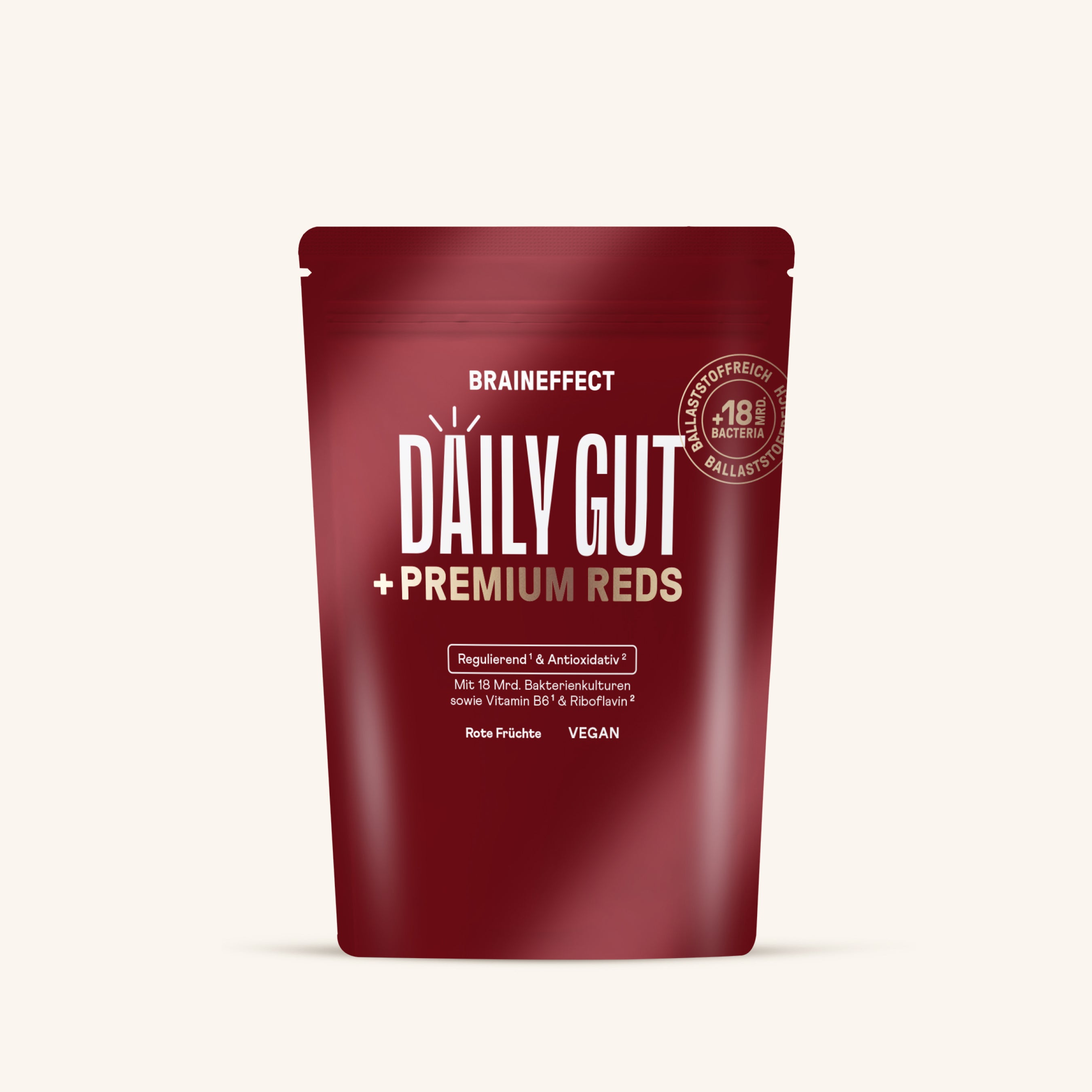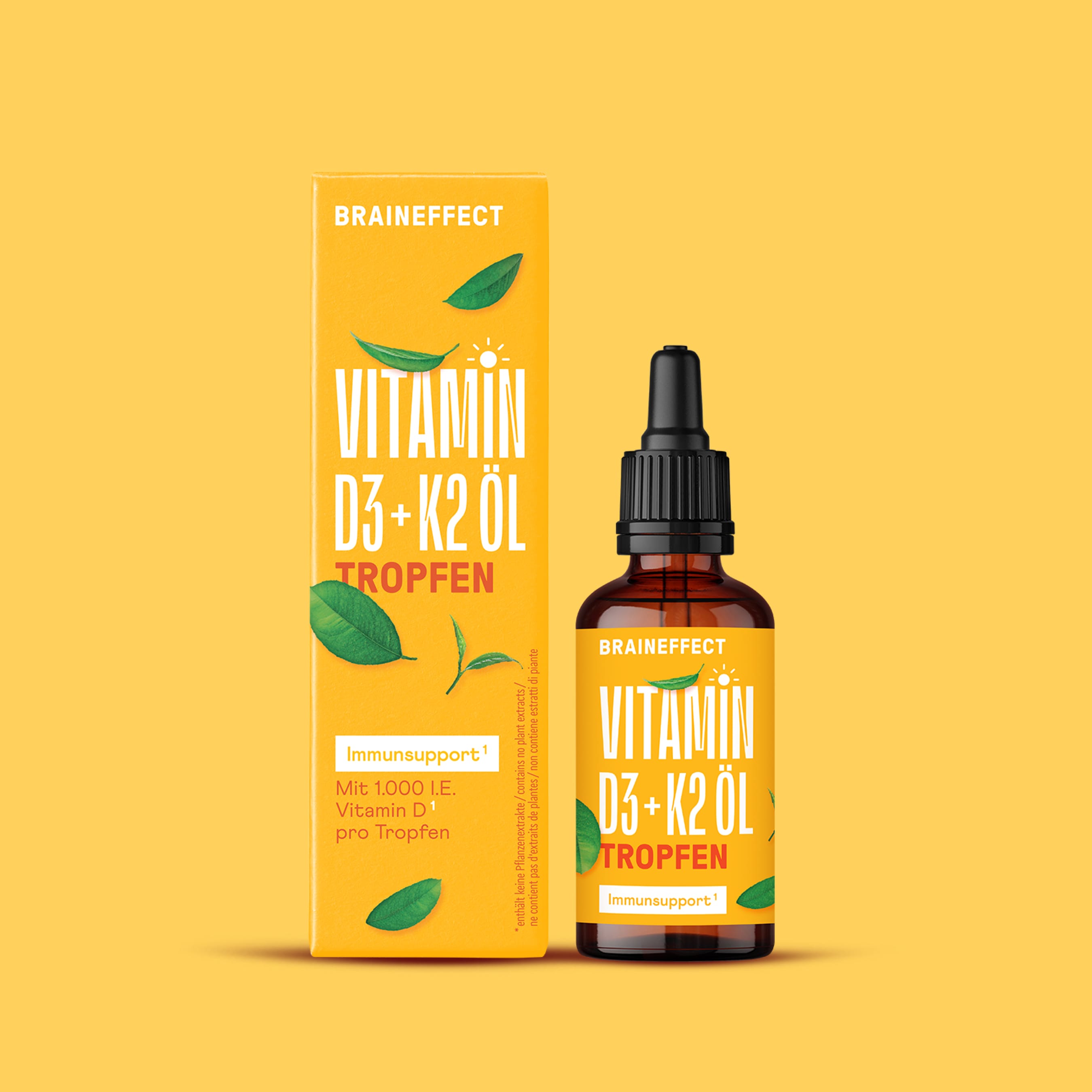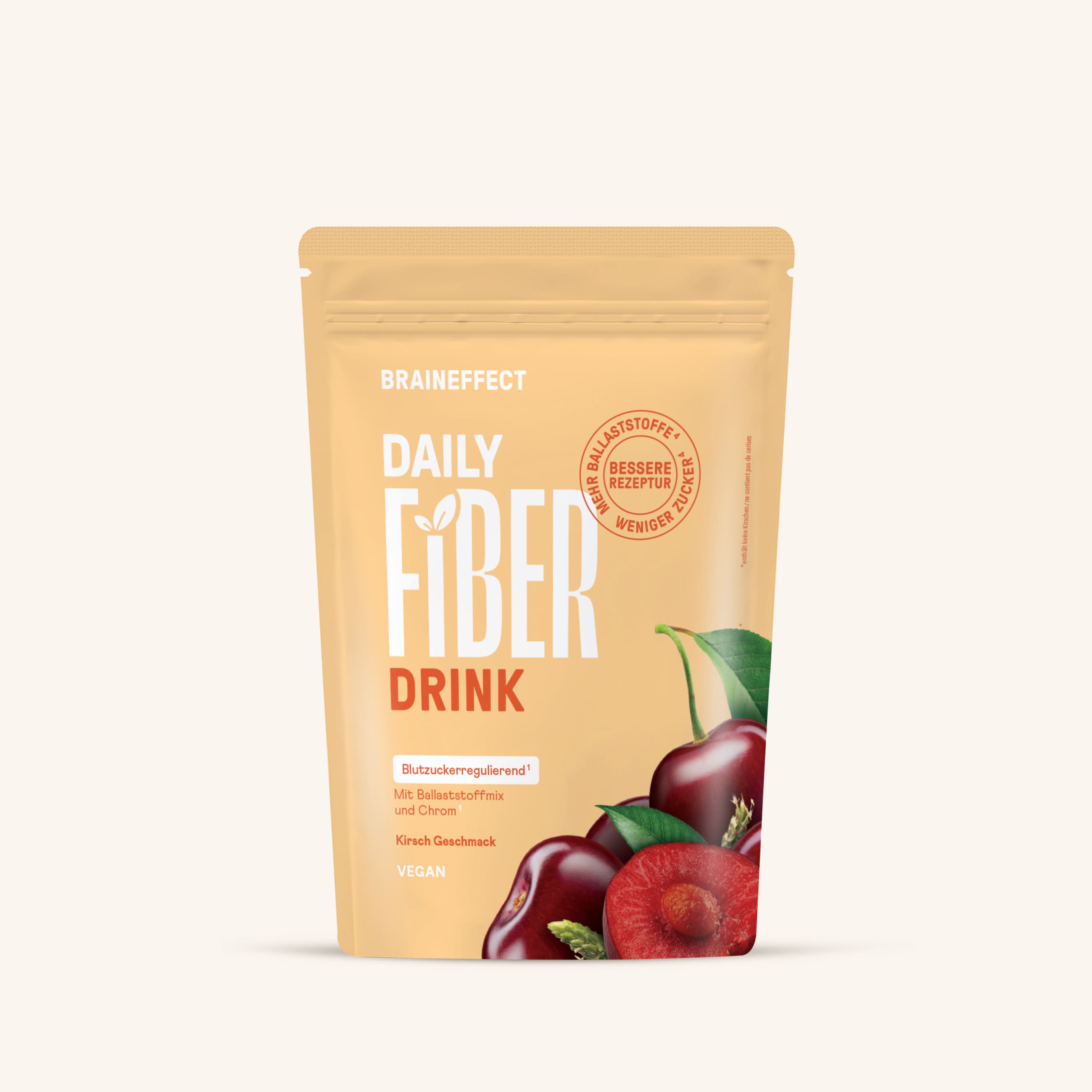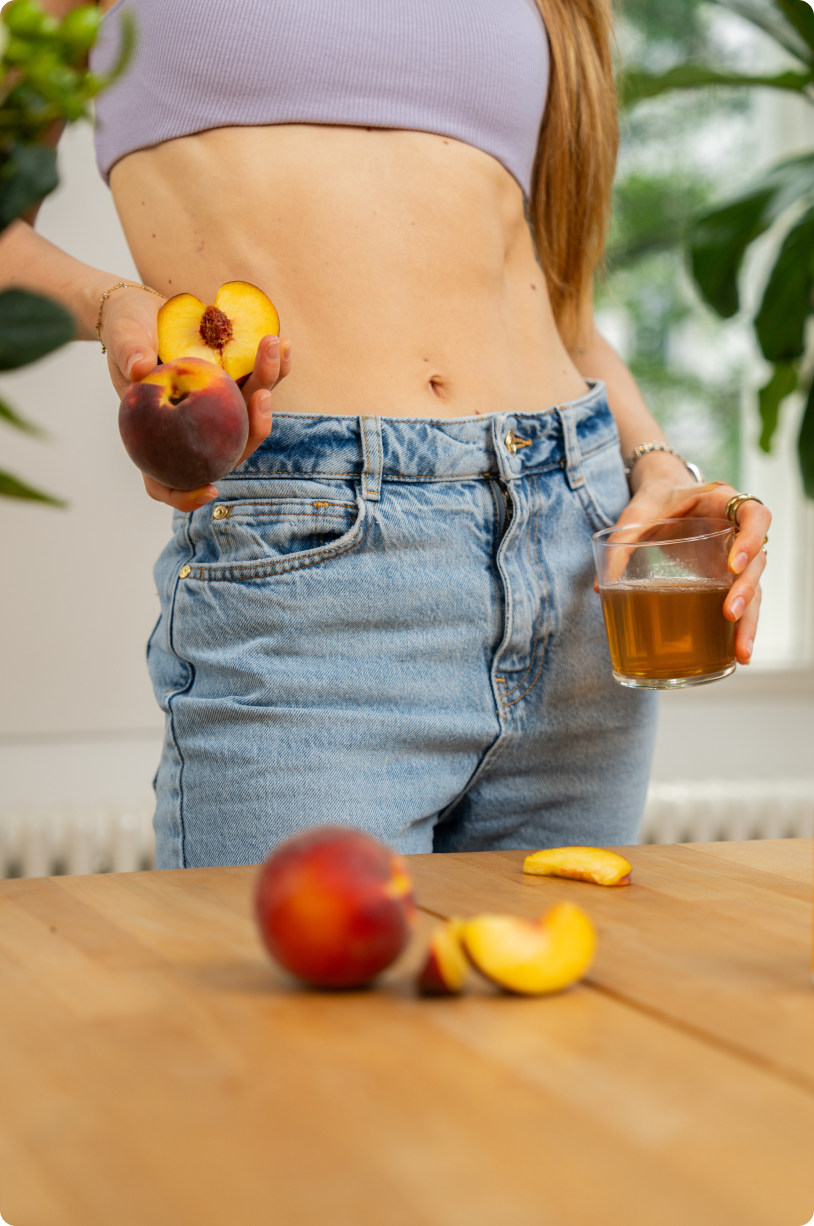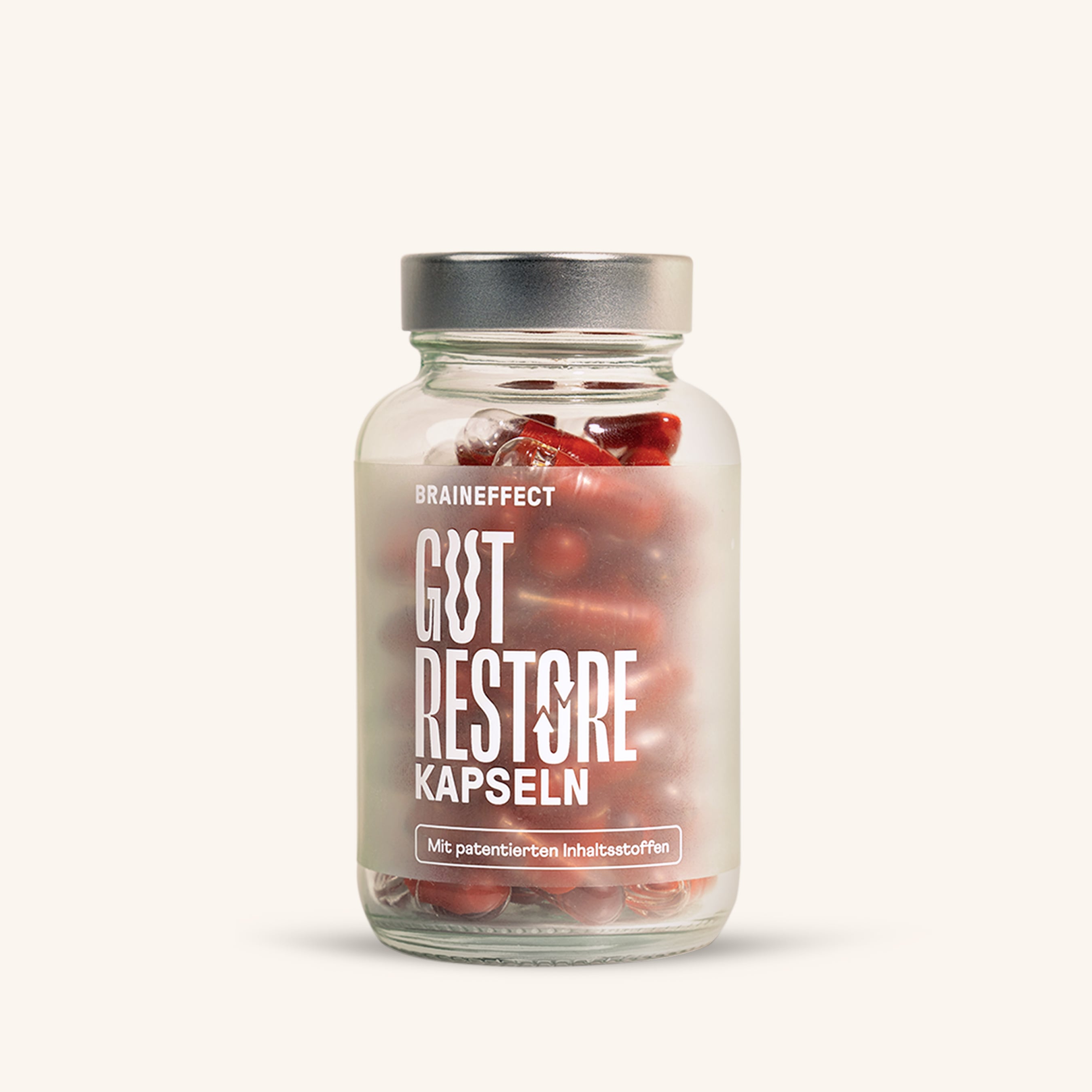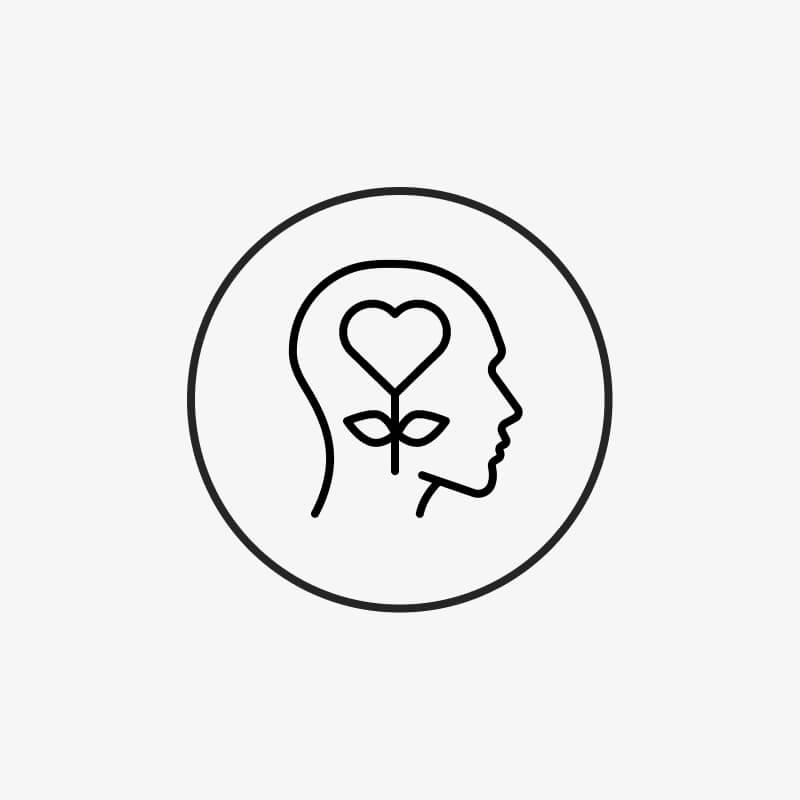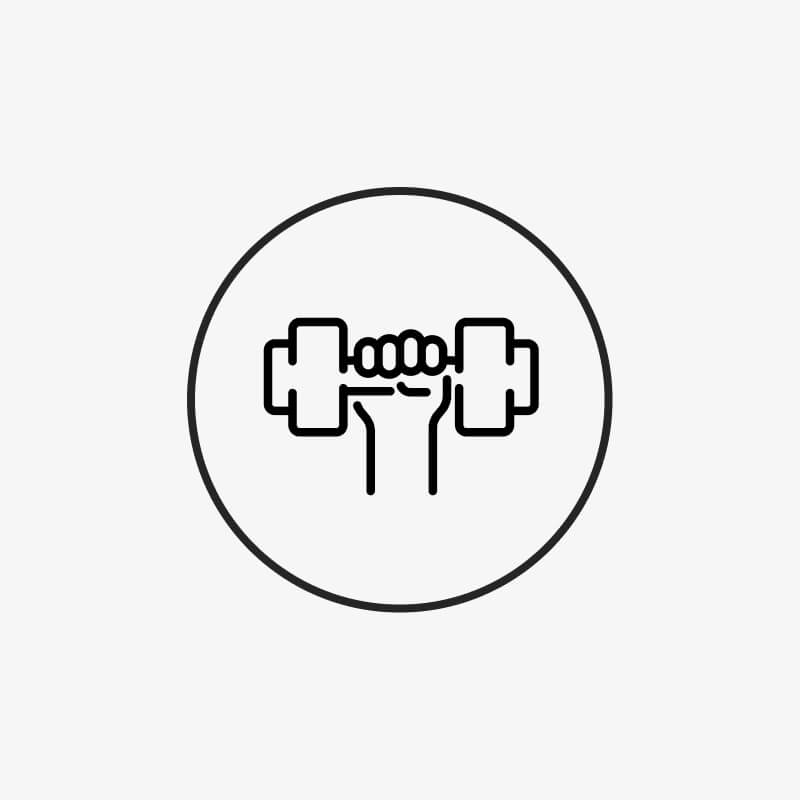In this article you will learn which nutrients you can use to support your body during your cycle.
TABLE OF CONTENTS
1. INTRODUCTION
Your diet has a huge impact on your well-being and bodily functions, including your menstrual cycle . The female cycle consists of four distinct hormonal phases, during which you can support your body (especially your hormonal system ) with carefully selected foods.
This will help maintain your hormonal balance and at the same time help relieve and prevent period pain .
To help you achieve this, our product experts have developed Hormone Balance Capsules , which are precisely tailored to the needs of menstruating women. They contain high-quality botanicals such as lady's mantle and vitamin B6 , which helps regulate your hormone levels .
2. THE RIGHT NUTRIENTS
FOR EVERY CYCLE PHASE
Does your good mood vanish as soon as your period starts? Here's the good news : Sure, periods can be annoying at times, but a regular cycle also means that your hormone production is functioning and your nutrient balance is correct .
It's essentially your internal feedback system , giving you monthly updates on what's going on in your body. We think that's pretty cool, because it lets you know right away if something's wrong with your body.
Your period is late? This can be caused not only by pregnancy or an illness (e.g., PCOS), but also by a nutrient deficiency , which is often due to poor nutrition.
In this article, you'll learn which vitamins , minerals , and trace elements are important for a regular cycle. Incidentally, symptoms such as fatigue, exhaustion, mood swings, and headaches can also improve with the right diet during each phase of your cycle.
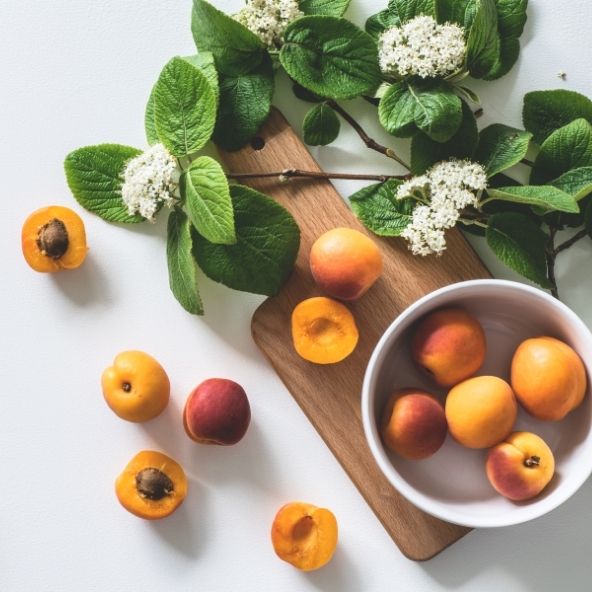
PHASE 1: MENSTRUATION
(Days 1 - 5)
Nutrient needs: Iron, Magnesium, Vitamin A
The first day of your period marks the beginning of your cycle. Due to a lack of the hormone progesterone, the uterine lining sheds and is shed with the bleeding.
During menstruation, you should provide your body with enough iron, magnesium and vitamin A.
iron
With the blood loss during your period, your body also loses about 15-30 mg of iron. You can recognize an iron deficiency by, for example, persistent fatigue or dry skin and hair .
Iron deficiency can also have a negative impact on your cycle: irregular periods or increased period pain are common symptoms.
To replenish your iron stores and at the same time prevent anemia, you should especially eat the following foods during this phase: millet, oatmeal, amaranth, flaxseed, almonds, apricots and figs (dried), soybeans, chickpeas, fennel, beetroot, arugula, and nettle.
By the way, coffee and tea (black or green) can inhibit iron absorption, while vitamin C improves absorption.
FOOD HACK: If you're vegetarian or vegan, you should regularly consume seeds, kernels, nuts, whole grains, and legumes to prevent iron deficiency. If you eat meat , this serves as an excellent source of iron.
magnesium
Magnesium supplements can be a quick anti-spasm aid and migraine reliever . As a preventative measure, you should start taking magnesium during the luteal phase (4th phase).
Pulses, pumpkin and sunflower seeds, and whole-grain foods. It's best to pay particular attention to your diet a week before your period begins .
The following foods are high in magnesium : cocoa powder (pure, without additives), sesame butter, pumpkin seeds, oat flakes, and quinoa. Nuts (cashews, almonds, and hazelnuts) are also a good source. Alternatively, there are also magnesium gummies , which cover 50% of your daily needs with just two gummies.
Vitamin A
To support your liver's ability to process hormones , you should ensure you get enough vitamin A. It's found in the following foods: kale, spinach, carrots, pumpkin, sweet potatoes, dried apricots, and savoy cabbage.
Tip: To avoid bloating , it is better to cook the vegetables and use only a little salt.
BRAINEFFECT HACK: DAILY GUT with 9 billion intestinal bacteria helps against flatulence and also supports your hormonal balance thanks to the added vitamin B12.
PHASE 2: FOLLIC PHASE
(Days 5 - 12)
Nutrient needs: Protein (Lysine), Fermented and sprouted foods
At the beginning of the follicular phase, estrogen levels are still relatively low, but they rise over time. Testosterone also plays a role in this phase in small amounts. However, if the level becomes too high, a woman's hormonal balance becomes unbalanced.
During the pre-ovulation phase, many women feel energetic , motivated , and very productive at work. It's also possible that your creative side is coming into play or you'd like to do activities with friends. [5]
Protein (lysine)
Since the lining of the uterus is regenerating during the second phase, your focus should now be on protein-rich foods. Proteins are essential for building body tissue . Valuable sources of plant-based protein include: soy shreds, tempeh, tofu, oatmeal, whole-grain spelt bread, legume pasta, lentils (red, brown, green), hemp seeds, almonds, chickpeas, kidney beans, and peanuts.

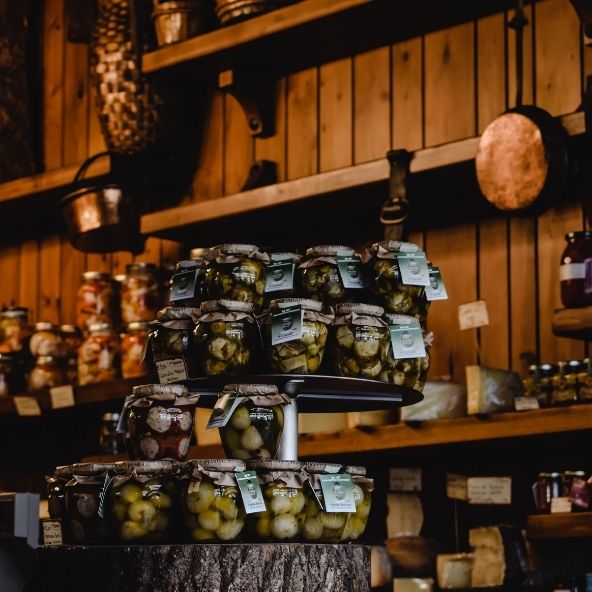
Fermented and sprouted foods
To optimize the increase in estrogen and FSH (a hormone involved in regulating the menstrual cycle in women) [4], sprouted and fermented foods with probiotic effects are helpful. They contain a lot of vitamin C and lactic acid bacteria , which also promote intestinal health. These include, for example, tempeh, kimchi, sauerkraut, miso paste, tamari soy sauce, and pickled vegetables (cucumbers, beets, bell peppers, cauliflower, broccoli, alfalfa, bean sprouts, radishes).
BRAINEFFECT HACK: Get your FEMALE POWER BUNDLE with essential premium supplements for your balanced cycle, plus an expert book set with extensive knowledge and delicious recipes, and support women worldwide . For every FEMALE POWER BUNDLE sold, BRAINEFFECT donates €5 to the organization Terre des Femmes. Learn more about the fundraising campaign for Terre des Femmes eV here.
PHASE 3: OVULATION PHASE
(Days 12 - 17)
Nutrient needs: Calcium, antioxidants, fiber
You have now reached the third phase and therefore it is now time for ovulation !
This is triggered by a drop in estrogen levels and a simultaneous rise in the hormone FSH and the corpus luteum hormone. Women often experience a strong desire for love and sex during this phase. At the same time, you are also at your most fertile during this time. Well played, Mother Nature, well played!
By the way, once you're ovulating, you should largely avoid red meat (e.g., beef and pork) and dairy products. Instead, focus on easily digestible carbohydrate sources, proteins, antioxidant-rich fruits, and plenty of vegetables (keyword: fiber!).
calcium
During this phase, you can optimally support your body with a calcium-rich diet that also energizes you. Foods that help include: amaranth, quinoa, poppy seeds, almonds, sesame seeds/sesame paste, calcium-fortified plant milk, yogurt, kale, arugula, and soybeans.
Fiber
To ensure you get enough fiber, you can now focus more on raw vegetables (spinach, peppers, cucumber, carrots, kale, fennel, celery, arugula, savoy cabbage).
Antioxidants
Did you know that spices and herbs have the highest concentration of antioxidants?
Spices not only enhance your dishes, but are also beneficial for your body. They bind so-called free radicals. These are caused by oxidative stress, damage your cells, and thus promote various diseases.
A simple rule of thumb is that the more intense the (natural) color, the more antioxidants it contains. So it's no surprise that vibrant turmeric and dark berries like blueberries, raspberries, currants, blackberries, strawberries, and cranberries are at the top of the list.
Dried figs and apricots also contain antioxidants. [3]
PHASE 4: LUTEAL PHASE
(Days 5-12)
Nutrient needs: Vitamin B6, diuretic foods, alpha-linolenic acid + ligands
Goodbye PMS! In the final phase of your cycle, you may experience an emotional rollercoaster of depression, irritability, and lack of motivation.
Added to that are symptoms like tender breasts, unsettled digestion, or, in the worst case, all of the above. What can you do about it?
First, provide your body with essential nutrients at every stage.
Vitamin B6
Secondly, B vitamins, especially vitamin B6, are considered a real insider tip , as they can improve your mood by supporting the synthesis of the feel-good hormones serotonin and dopamine. Vitamin B6 can be found in: sesame seeds/sesame butter, oatmeal, walnuts, peanuts, whole-grain rye bread, chickpeas, red lentils, bananas, bell peppers, avocados, and kale.
Dehydrating foods
Fresh nettle tea can be very helpful against water retention during the luteal phase. Nettle has a diuretic and antispasmodic effect, which can reduce bloating. Breast tissue, in particular, becomes less tense and remains more supple.
Ginger and lemon balm tea also have a positive effect in this context.
In addition to herbal teas, the following foods are also said to have a diuretic effect: watermelon, pear, pineapple, lemon, asparagus, cucumber, celery, fennel, asparagus, lettuce, cucumber, tomato, rhubarb.
Alpha-linolenic acid (ALA) + ligands
Alpha-linolenic acid is a polyunsaturated fatty acid that, in combination with lignans (secondary plant substances), can significantly reduce PMS symptoms .
Lignans are also used to counteract hormonal fluctuations and, similar to diuretic foods, help against breast tenderness .
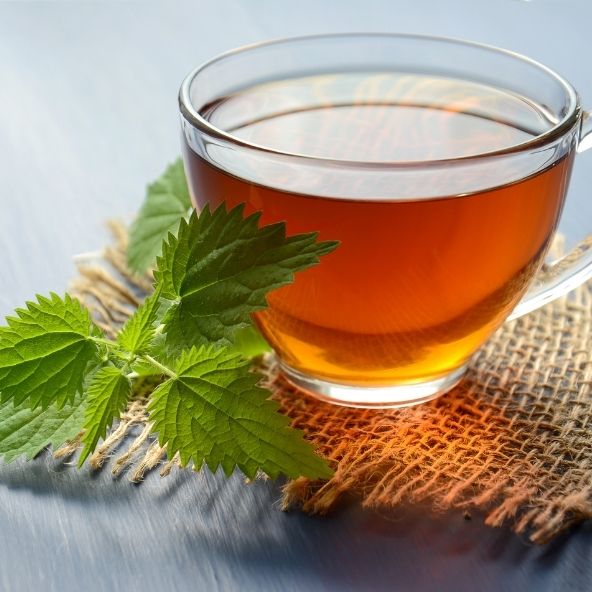
ALA can also have a stabilizing effect on your mental health and, along with vitamin B6, can alleviate the psychological symptoms of PMS.
Food Hack: Flaxseeds contain both ALA and lignans and are therefore particularly good for use in PMS symptoms.
A tablespoon of crushed flaxseed per day can therefore be described as a “holy grail,” especially in the luteal phase, but also during the rest of the cycle.
Tip: Use whole flaxseeds and grind them fresh in a blender . Ground flaxseeds from the supermarket are usually ground for too long, making the nutrients less available to your body.
Walnuts, hemp seeds, and chia seeds are also beneficial during the final phase of your cycle.
CONCLUSION
Your body is a temple—treat it like this. Because everything you consume through food has a fundamental impact on your health and well-being.
You can massively support your body and especially your hormonal balance by maintaining a nutrient-rich and balanced diet.
This includes not only the essential macronutrients such as carbohydrates, fats and proteins, but also all micronutrients such as vitamins and minerals.
So the first step is to develop an awareness of your body's nutritional needs during the different phases of your cycle.
In a second step, you can then look at which foods meet your needs. Try not to put too much pressure on yourself.
For example, to start with, pick one food per phase and include it in your meals as desired.
As a kind of test phase , you can, for example, make sure to eat iron-rich foods before and during your period to develop a sense of how your body behaves and perhaps even changes.
SOURCES
[1] https://www.vital.de/gesundheit/frauengesundheit/regelmaessiger-zyklus-diese-naehrstoffe-braucht-der-koerper-903.html
[2] http://rundumpflanzlich.de/ernaehrungsberatung/zyklus/
[3] https://erdbeerwoche.com/meine-regel/wie-ernaehrung-deinen-zyklus-beeinflusst/
[4] https://www.netdoktor.de/Diagnostik+Behandlungen/Laborwerte/FSH-Follikel-stimulierendes-Ho-1240.html
[5] https://ovularing.com/die-zyklus-phasen-als-jahreszeiten-betrachtet/
